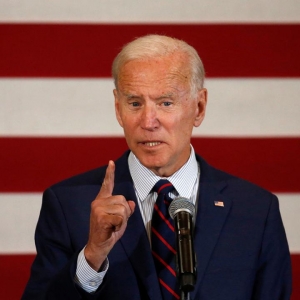
Many of the administration’s early Middle East security efforts will boil down to crisis management, but new frameworks like the Abraham Accords may provide opportunities to address longer-term problems.
The Biden administration’s national security team may be tempted to focus on potential early tests by foreign adversaries, urgent matters demanding immediate attention, and potential “quick wins” such as strengthening and lengthening the Joint Comprehensive Plan of Action with Iran, building on and expanding the Abraham Accords, and consolidating the Gulf Cooperation Council reconciliation process. Certainly, it should do all these things. But in its first 200 days, it also needs to fundamentally rethink how the United States can advance its interests in a conflict-prone region located at the crossroads of Europe, Asia, and Africa, as it increasingly turns its attention to the Indo-Pacific region and other parts of the world.
The Middle East’s most vexing problems cannot be “solved”—at least for now; crises will need to be “managed.” Seeking to freeze conflicts or play the role of spoiler may lack appeal to U.S. policymakers used to playing the role of regional peacemaker or hegemon, but these alternative policy approaches can halt humanitarian disasters and deny victory to adversaries. In many cases, that will be good enough. And the United States must become more adept at the limited use of force in circumstances well short of war; that will, unfortunately, remain necessary in the Middle East. Policymakers need a vocabulary and mental models more appropriate to “by, with, and through” and gray zone operations in order to advance U.S. interests with a light force footprint, in ways that bolster diplomacy but do not roil a war-weary public back home. They likewise need to rethink how the United States trains foreign militaries, in order to build partner forces capable of bearing their share of the defense burden. And the United States needs to launch a missile defense Manhattan Project to develop the means to defeat the main asymmetric capability possessed by U.S. adversaries in the Middle East and elsewhere.
The roots of many of the region’s conflicts are structural and cultural: large youth bulges; rapid urbanization; extreme gender hierarchies; destructive governance models; conflict-prone honor cultures and super-charged asabiyas (social solidarities). All of these are risk factors for instability, violence, and state failure that interact in often subtle and harmful ways, and that are exacerbated by stressors such as climate change and environmental degradation. Addressing these looming challenges will require long-term approaches that transcend the traditional policy toolkit. The Abraham Accords, however, may offer a first step toward the kind of regional and global partnerships necessary to better manage the Middle East’s present conflicts and address its future water and food security, public health, and climate challenges. Let’s get to work!
Michael Eisenstadt
The Washington Institute
